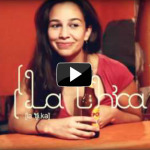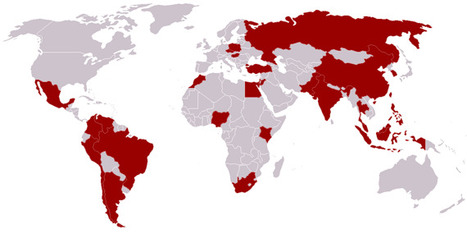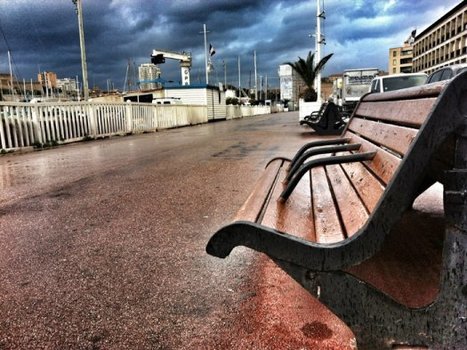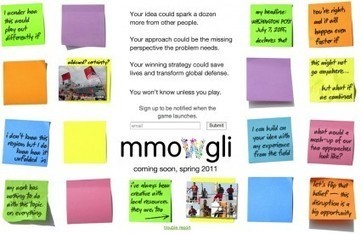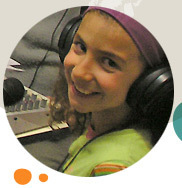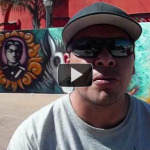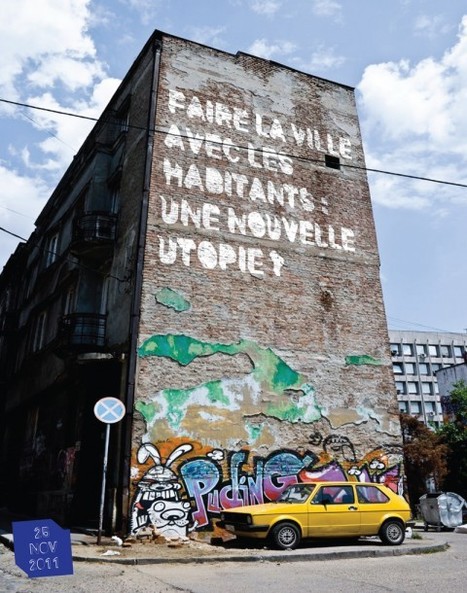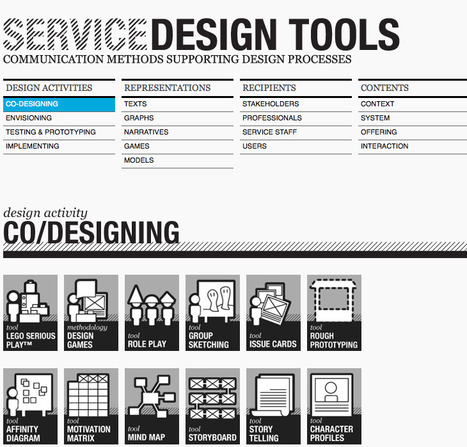Video realizado por Estudiantes de 7º semestre de diseño gráfico en la Fundación Universitaria Del Área Andina Seccional Pereira para el 1er Concurso Latinoamericano de Video “Ciudadanía en las calles” convocado por la revista de reflexión latinoamericana Distintas Latitudes (www.distintaslatitudes.net)
Get Started for FREE
Sign up with Facebook Sign up with X
I don't have a Facebook or a X account

 Your new post is loading... Your new post is loading...
 Your new post is loading... Your new post is loading...
Université Paris 8 (Vincennes → Saint-Denis)...
From
owni
Analyse du rôle de la ville dans le gameplay de Grand Theft Auto (GTA). Pour Nicolas Nova, l’évolution constatée dans les épisodes successifs fait "écho aux transformations urbaines apparues au cours de l’histoire, en version accélérée".
A few weeks back, we reported on N0tice, a pretty innovative project that the Guardian newspaper is trialling, one with potential to take news reporting, and news gathering, in new ...
Research company Gartner reckons that by 2014, more than 70% of the Forbes' major companies will have at least one gamified application.
It has been seen in countless science fiction: a city where the LCD advertisements target themselves to your interests, where everything is wireless and...
In the classical user-centered design, the user is a passive object of study, the researcher brings knowledge from theory and enrich this knowledge by the observation of the user, the designer uses this knowledge and stimulates it through technology and creative thinking, and if there is a client at the origin of the whole process, he receives the results with no need to report afterthought. With co-design, all these roles are significantly changed : Via Carol Ann BRAUN
La 27e Région est la première agence d’innovation publique qui permet aux Régions de préparer l’avenir et de changer leurs méthodes d’action. Via Carol Ann BRAUN
En 1954, Robert Jungk élabore en Allemagne cette méthode qu’il nomme « Ateliers de l’avenir. Des chemins pour revivre la démocratie ». Il part du principe et montre que la parole de l’habitant constitue un immense réservoir d’idées et de potentialités pour l’avenir. Via Carol Ann BRAUN
|
Comment penser autrement l’urbanisme.Amphi Cinéma, École Spéciale d’Architecture. (...)...
Penser ensemble « art, morale et politique » revient avant tout à rendre problématique une relation qui ne va plus de ...
Site de l'Université Paris 1 Panthéon-Sorbonne...
Robin's summary:
Semil Shah on Techcrunch analyzes how even light curation and social sharing tools serve increasingly individuals in "discovering" sources, ideas, people and products they do not know yet.
This paragraph struck me:
"There is too much information online, too many pages filled with stock images and no context. Search engines provide significant utility, but we still have to exert energy to find what we need after results are algorithmically surfaced. The new crop of social media companies help discovery come online and threaten traditional search. With these new tools, users are able to clip and collect the bits of the web that they are most interested in and, in the process, disregard the rest as noise."
When or if curator replace traditional search? I still use search when I'm looking for something specific - but when I'm on a hunt to track down resources for a topic I'm writing or teaching about, I go to the curators first to make sense and use search to fill in the gaps.
Via Robin Good, Beth Kanter, Jandira Feijó 
Beth Kanter's comment,
November 7, 2011 10:16 AM
At what point will following the curators replace search or rather for what types of information seeking?

Robin Good's comment,
November 7, 2011 10:25 AM
Hard to say. Maybe never. It depends also on how search engines will evolve and how much of a role me and you will want to play in the post-Google era. ;-)

Pittsburgh Tote Bag Project's comment,
November 25, 2011 9:20 PM
This is absolutely true for me. I feel somewhat overwhelmed managing information for my personal blog (www.pghlesbian.com) as well as our project blog, both of which requite me to sort a significant amount of information. I find myself coming here and to other curators (as I find them - any leads on good LGBTS curators?) and feeling like my head is a little above water. Thanks!
Tinkuy, société spécialisée dans l’accompagnement et la mise à disposition d’outils (...)...
Last week, visualization researchers from all over gathered in Providence, Rhode Island for VisWeek 2011. One of the workshops, Telling Stories with Data, focused on data as narrative and what that means for visualization. This is a guest post by the organizers: Nick Diakopoulos, Joan DiMicco, Jessica Hullman, Karrie Karahalios, and Adam Perer. Via Carol Ann BRAUN
Users and other figures can become part of the design process as expert of their experience, but in order to take on this role they must be given appropriate tools for expressing themselves. Via Carol Ann BRAUN
Michel Serres lors de la conférence donnée à Lille à l’occasion des 40 ans de l’INRIA.
Le philosophe invite son auditoire à prendre conscience de la révolution cognitive générée par la révolution de l'information. Pour lui, les nouvelles technologies ont poussé l'homme à externaliser sa mémoire.
Source : Interstices Via @GeoffreyDorne Via Sylvia Fredriksson
Après la validation des schémas d’organisation des sites de La Chapelle et d’Aubervilliers le 14 juin, la validation du programme général au conseil d’administration de la Fondation, le 18 octobre 2011, marque une importante étape dans la progression du projet de Campus. Point d’aboutissement d’un travail collectif engagé dès le début de 2010, ce programme a été élaboré dans le cadre d’une large concertation associant plus d’une centaine de représentants des établissements et organismes fondateurs, réunis en groupes de travail, puis en séminaires. Il repose sur les « fondamentaux du Campus », qui rassemblent les résultats de cette réflexion collective et déclinent les principes de la programmation, spécialement en ce qui concerne les espaces de recherche et de formation à la recherche, et la vie de campus. Via Sylvia Fredriksson |



